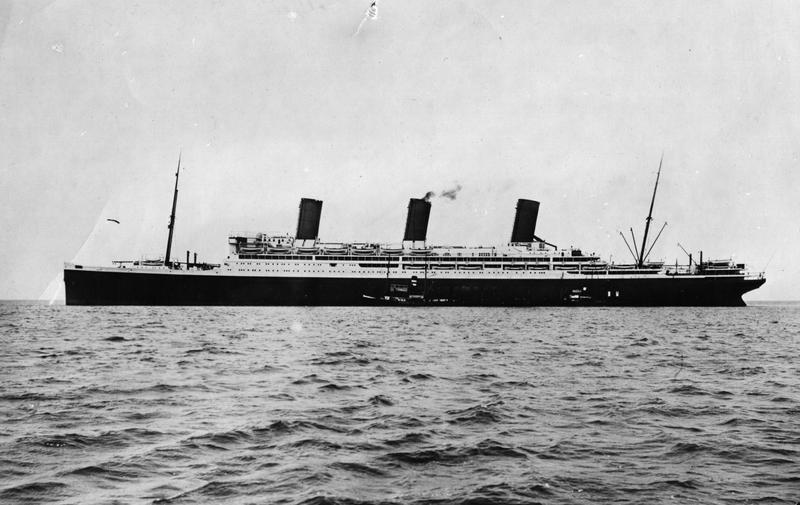The Sinking Of The “Unsinkable” Bismarck
By | January 29, 2019

In the early morning hours of May 19, 1941, Bismarck quietly set out on its maiden voyage in the Baltic Sea. Traveling under the cover of darkness, the Germans were confident that this formidable battleship was indestructible.
Bismarck was touted as an “ocean-bound castle.”
Bismarck was heavily armored and was the first of its kind, a full-scale battleship, constructed by the German Navy since World War I. This impressive vessel was accompanied by the Prinze Eugen, which was the largest warship in use. The pair braved the icy, open waters of the North Atlantic Ocean on a secret mission.
Operation Rheinubung was the code-name of Bismarck’s secret mission.
Bismarck’s mission was to attack the Allied ship convoys that were crossing the Atlantic between the United States and Great Britain. The convoys were carrying oil, food, and other necessary supplies. The Nazis had hoped to interfere with the Allied Forces' lifeline, thereby making Great Britain to comply with their authority. If the United States couldn’t supply Great Britain with necessities, they would surely starve.
Great Britain was one step ahead of the Nazis in their quest for destruction.

The British had received intelligence reports that Bismarck was afloat in the Atlantic stalking the Allied ships. In response, they dispatched their own Navy to track it down. HMS Prince of Wales and HMS Hood were charged with the mission. First launched in 1918, Hood was Great Britain’s best solution to foil Bismarck. Hood may have actually been the most famous warship in use at the time.
By May 24, 1941, the British Navy ships had spotted the enemy inside the Denmark Strait and advanced Bismarck at full speed. Hood was approximately 14 miles away from Bismarck when it fired the first shots. Bismarck was under attack with shells screaming (at 2,000 MPH) all around it. The Nazis all but froze in utter shock of the attack. Admiral Gunther Lutjens was the Nazi commander in chief and couldn’t decide on his next move as Hood closed in on him. Ernest Lindemann, Bismarck’s Captain, eventually moved to override his superior and ordered return fire.

Bismarck and Hood exchanged fire for just four minutes before Bismarck found its target.
Bismarck fired a shell that ripped right through the heavy armor of Hood and struck its ammunition magazine. The blow unleashed a deadly explosion that shot 600 feet into the air. Hood had been torn in two and buckled beneath the waves of the icy water. Only three of the 1,421 crew members survived the disaster. The loss of Hood went down in history as the Royal Navy’s largest loss of human life from a single ship.

Although Hood had been sunk, Bismarck suffered its own nautical disaster. Bismarck had been hit as well and began taking on massive amounts of water as well as losing oil that was gushing from a ruptured fuel tank. Captain Lutjens was left with no other alternative than to abandon the mission and retreat without pursuing the Prince of Wales.

Britain was not about to back down from the Nazis after the Bismarck attack.
Before Bismarck could safely make it back to protective waters, British Admiral John Tovey sent out a plea for all available ships to track down the offending warship. Time was of the essence and Tovey issued the order to attack by air. The British aircraft carrier HMS Ark Royal was in the vicinity and was armed with torpedoes. British Fairey Swordfish bombers ascended from the deck and immediately found themselves enveloped in storm clouds. Unfortunately, they accidentally dropped friendly fire on their own, missing their intended target. Fortunately, the torpedoes didn’t detonate, avoiding a deadly tragedy.

The royal bombers returned to the aircraft carrier to reload for another attack, still amid the storm. This time, they hit their target and descended on the Nazi in a fierce attack that disabled Bismarck’s anti-aircraft defenses. The Nazi sailors didn’t have time to react and were left with an enormous breach in Bismarck’s hull. The blast disabled Bismarck’s steering machinery causing it to travel only in circles. Bismarck was a sitting duck.
Out of an abundance of caution, the British surrounded Bismarck until morning to avoid any further friendly fire. Bismarck was rendered helpless and spent the night surrounded by the enemy in wait. At the break of day on May 27, 1941, three British warships surrounded the disabled battleship at a distance and opened fire over the next 90 minutes. At 10:40 am, Bismarck took its final blow by HMS Rodney and slipped under the ocean's surface. Hundreds of German sailors were at the mercy of the ocean’s frigid water as they bobbed around, unprotected.

110 Bismarck survivors were picked up by British ships. Approximately 2,000 dead sailors were left behind. The “unsinkable” Bismarck had met its match and sank to the bottom of the massive Atlantic Ocean less than ten days after it set out on its maiden voyage.

